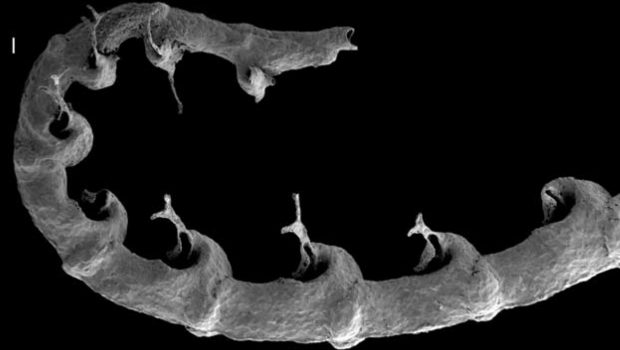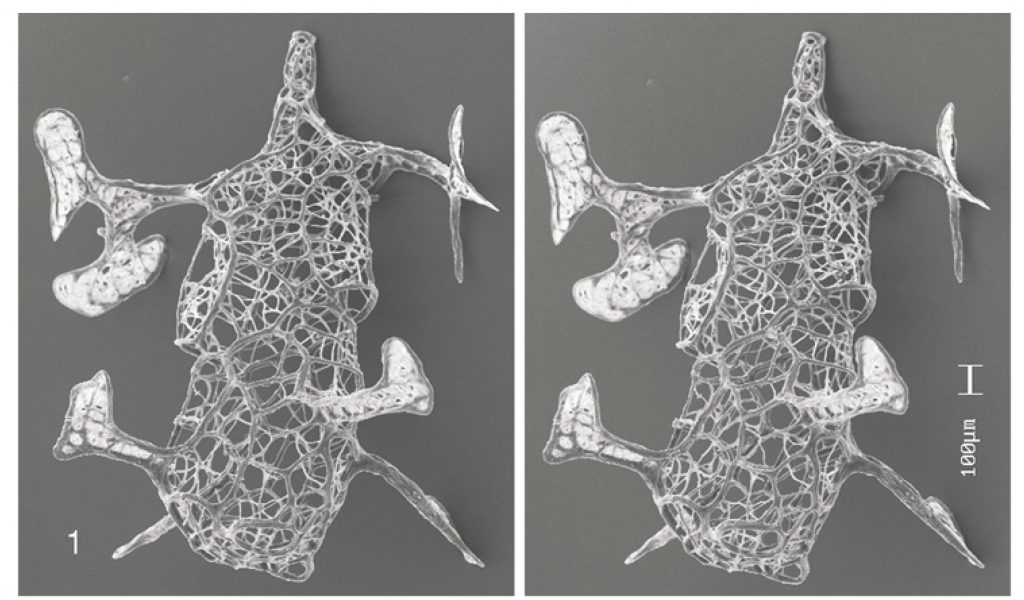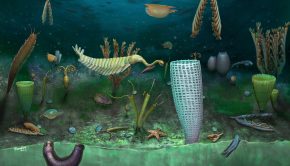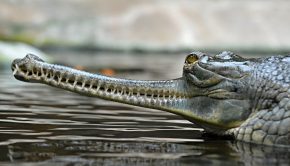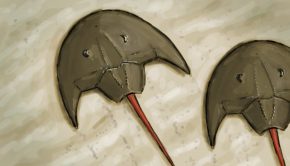Episode 71: Graptolites
Graptolites are small colonial organisms, each made up of many tiny, genetically identical zooids joined together by tubes. They’ve been around since the Cambrian and at times in Earth’s history have been very morphologically and taxonomically diverse. Now there is just one living genus, but they are very common in the fossil record, often appearing as a ‘sawtooth’ pattern flattened on surfaces of deep sea sedimentary rocks.
In this episode Laura talks to Dr David Bapst, a postdoctoral scholar at UC Davis and adjunct assistant professor at the South Dakota School of Mines, about extinct graptolites – the Graptoloidea – and how these animals have changed in the 520 million years since they originated. We find out about major events in their evolutionary history including the transition from sea-floor dwelling benthic species to plankton that floated in the water column, and the reduction through geological time of the number of branches from many branching dendritic forms to the single ‘stick’ monograptids.
Podcast: Download (Duration: 37:21 — 34.2MB)
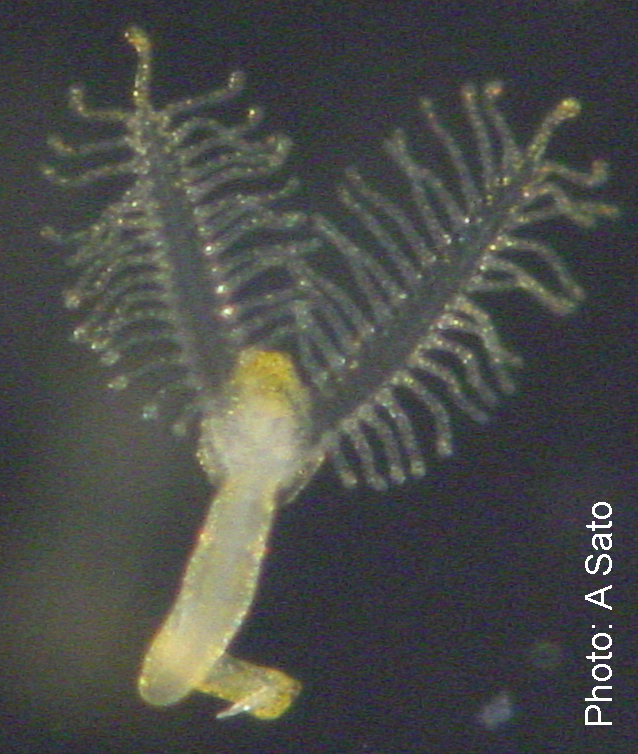
A zooid from a modern Rhabdopleura compacta colony, effectively a zooid of a living graptolite (and a model of what zooids of the graptoloid colonies might have looked like). (Credit: Atsuko Sato.)
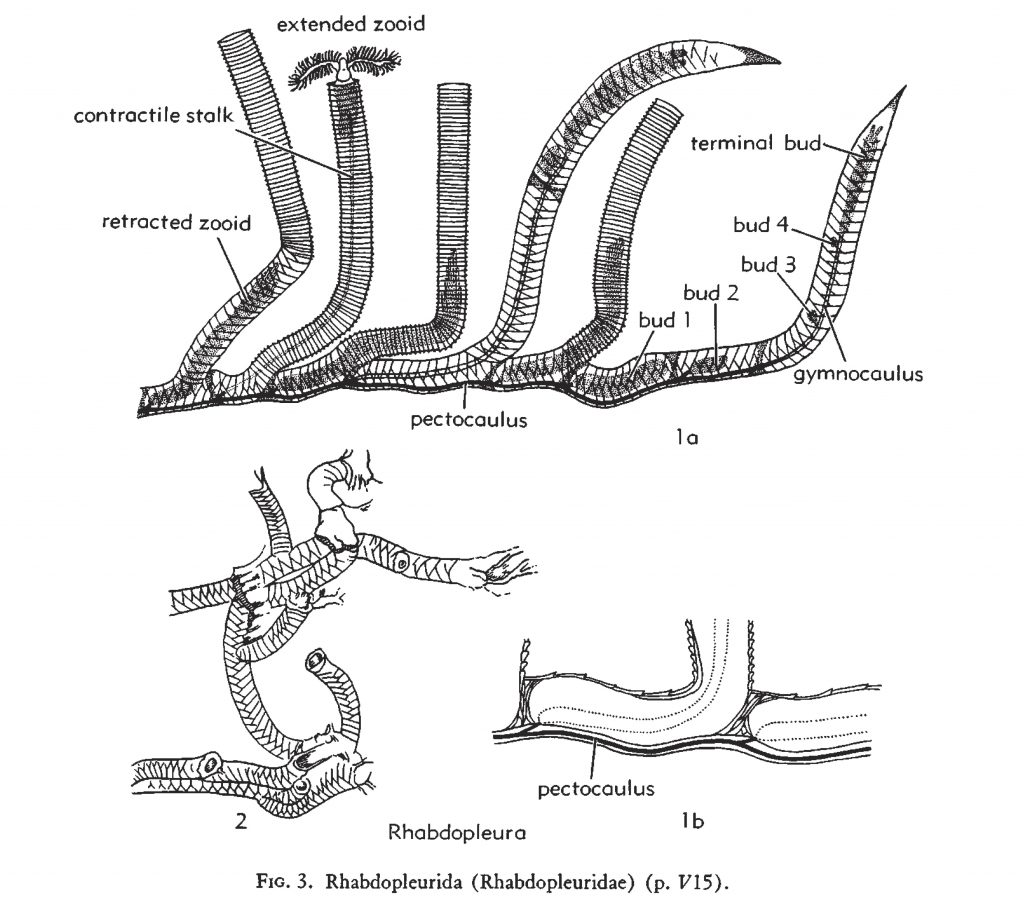
Some conceptual diagrams of modern Rhabdopleura colonies from the Treatise volume on graptolites (Bulman, 1970).
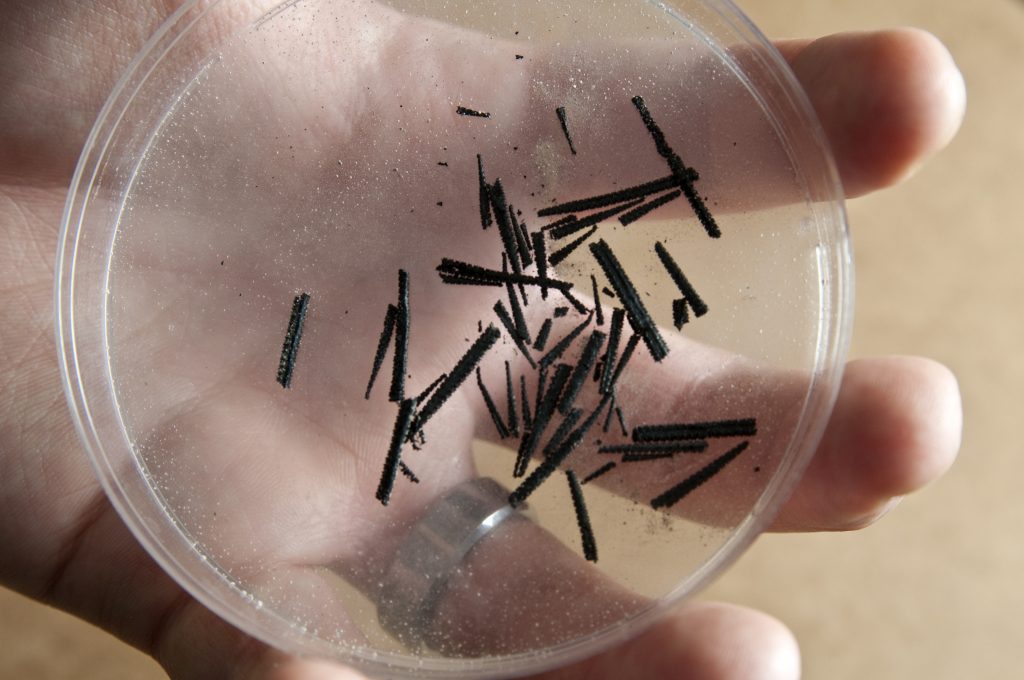
A petri dish of three-dimensional specimens from carbonate concretions, isolated via acetic acid by Dr. Bapst (who is holding the petri dish). These belong to the species Geniculograptus typicalis, a biserial graptoloid from the late Ordovician. (Credit: Lloyd DeGrane)
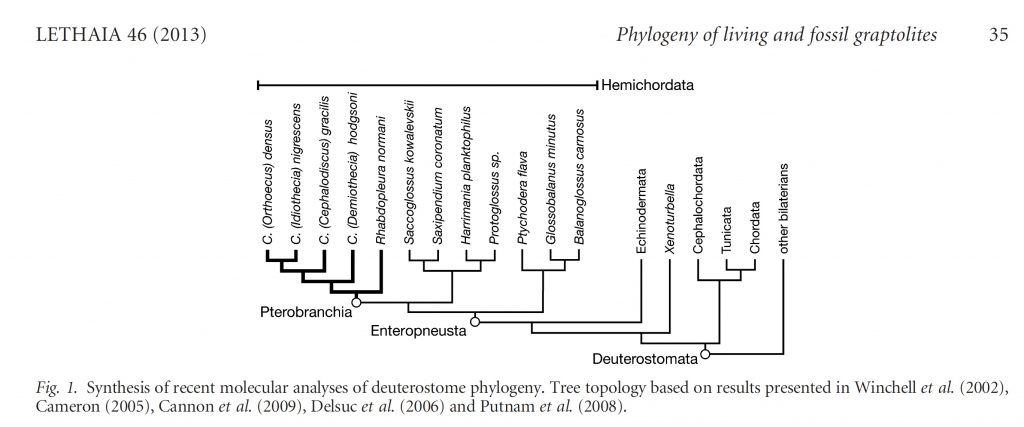
An evolutionary tree showing where extant hemichordates are placed, as summarized by Mitchell et al. 2013. The group that humans belong to, as well as all other vertebrate animals and some invertebrates like lampreys, is Chordata and is second from the right on this tree. The Hemichordata includes the graptolites and as you can see is quite closely related to Chordates. More recent phylogenetic analyses have already changed some of the relationships of the Hemichordata.
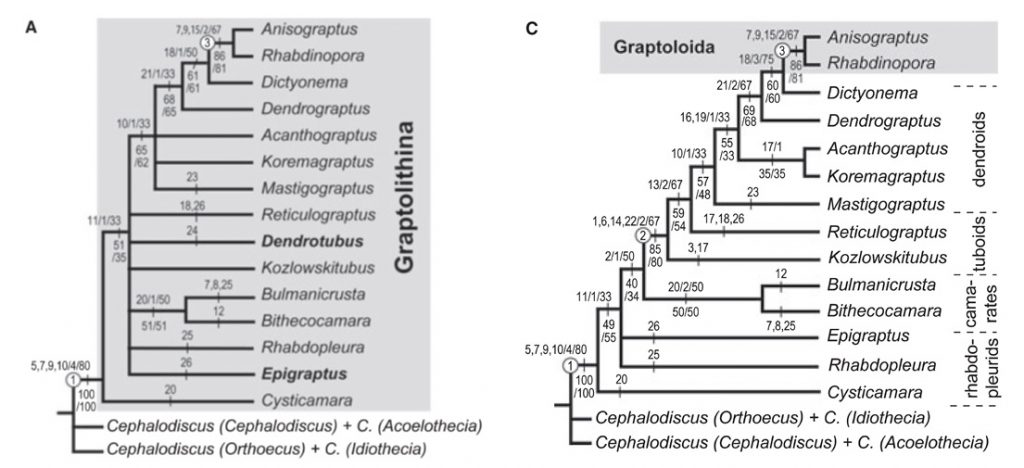
Two cladograms from Mitchell et al. (2013) differing slightly in the taxa included, showing the placement of Graptolithina among living and fossil pterobranchs (and including the extant Rhabdopleura, but excluding the extant Cephalodiscus), and the placement of the planktic graptolite clade, the graptoloids.
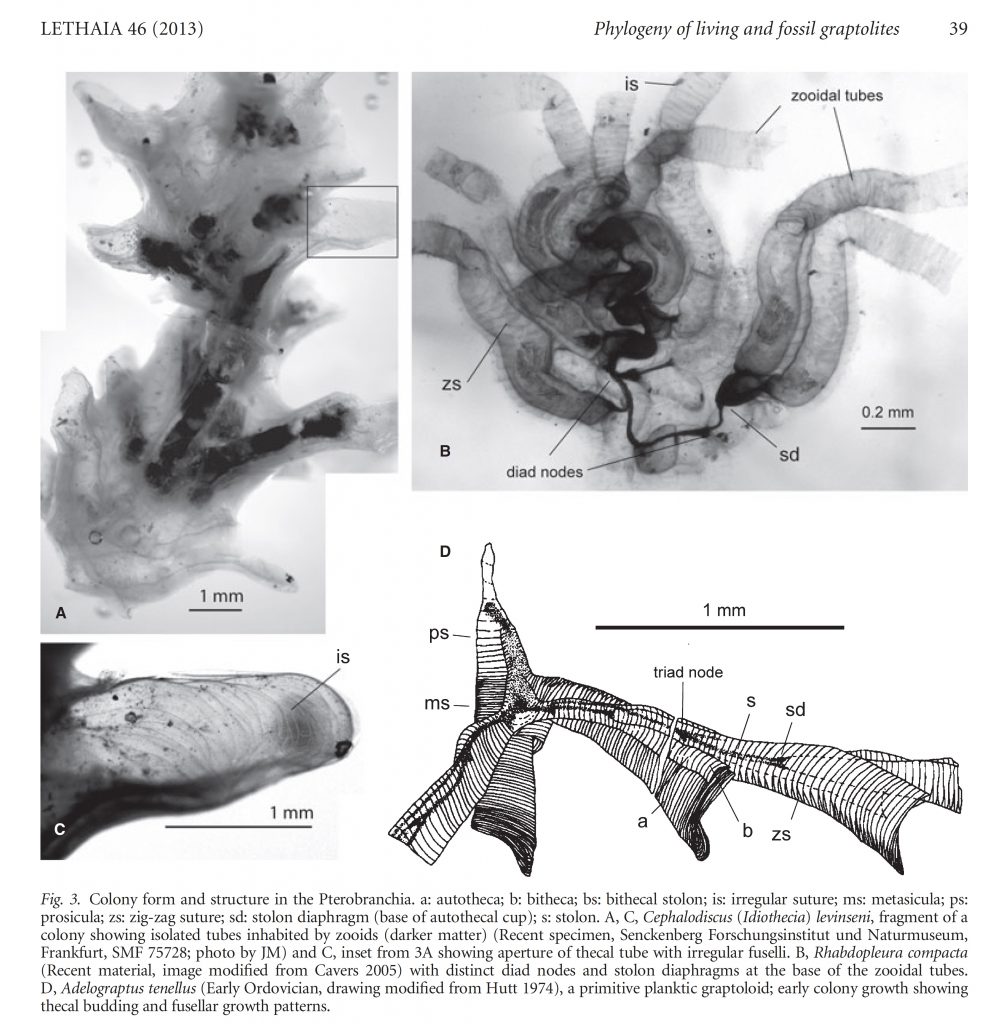
A comparison of the construction of Cephalodiscus tubes (A & C) versus those of the graptolites, the extant Rhabdopleura (B) and an extinct graptoloid (D). From Mitchell et al. (2013).
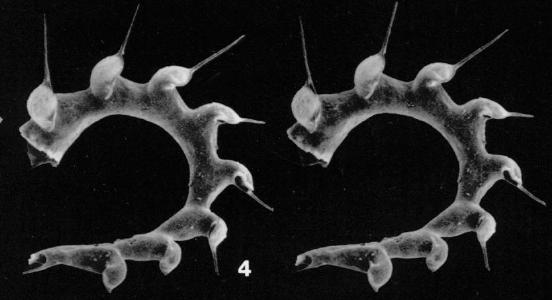
A stereogram of an SEM image of an isolated, three-dimensional Cyrtograptus sakmaricus from Lenz and Melchin, 1989, showing the hooded, spined thecae of this Silurian monograptid. To view a stereogram for 3D effect, relax your eyes until the two images overlap.
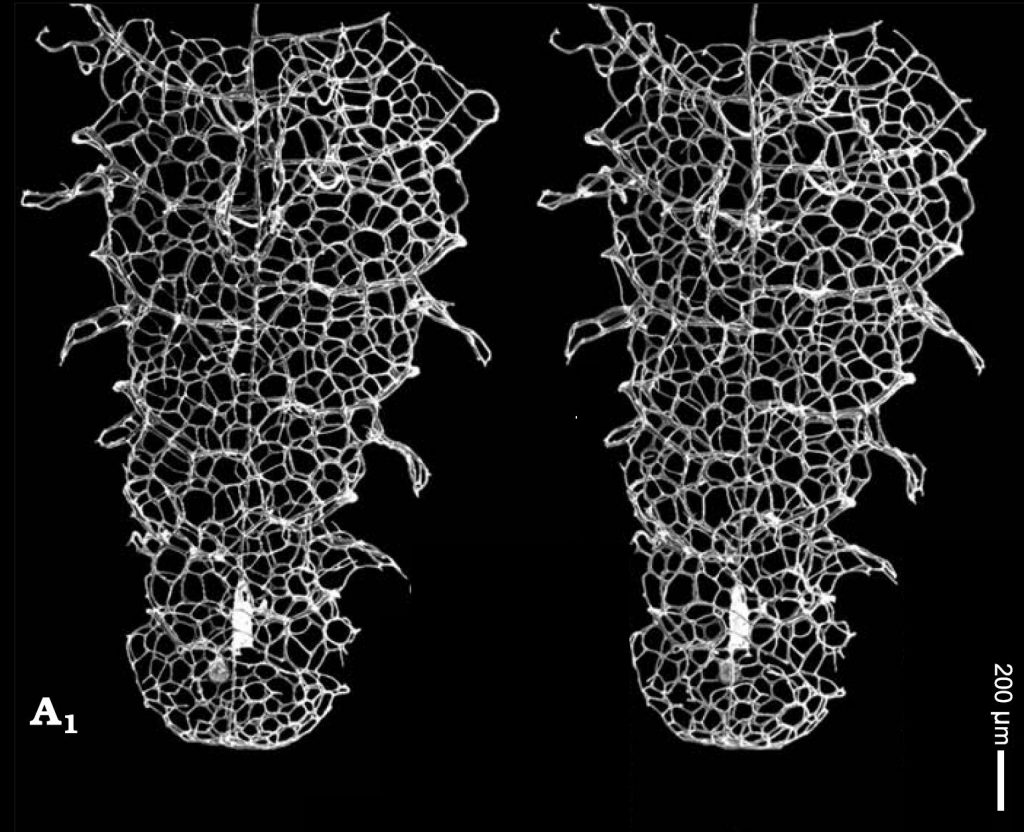
An SEM stereogram of Pileograptus, a retiolitid graptolite from the Silurian, showing the reticulating, web-like mesh called an ancora sleeve, which actually enveloped the colony, from Lenz and Koslowska (2007). The thecae are also reduced to reticulating struts, although it is possible that there were thin membranes in between the struts that were then lost due to taphonomy. The sicula (the ice cream cone-like tube that is the start of every graptoloid colony) is the only element constructed the typical way.
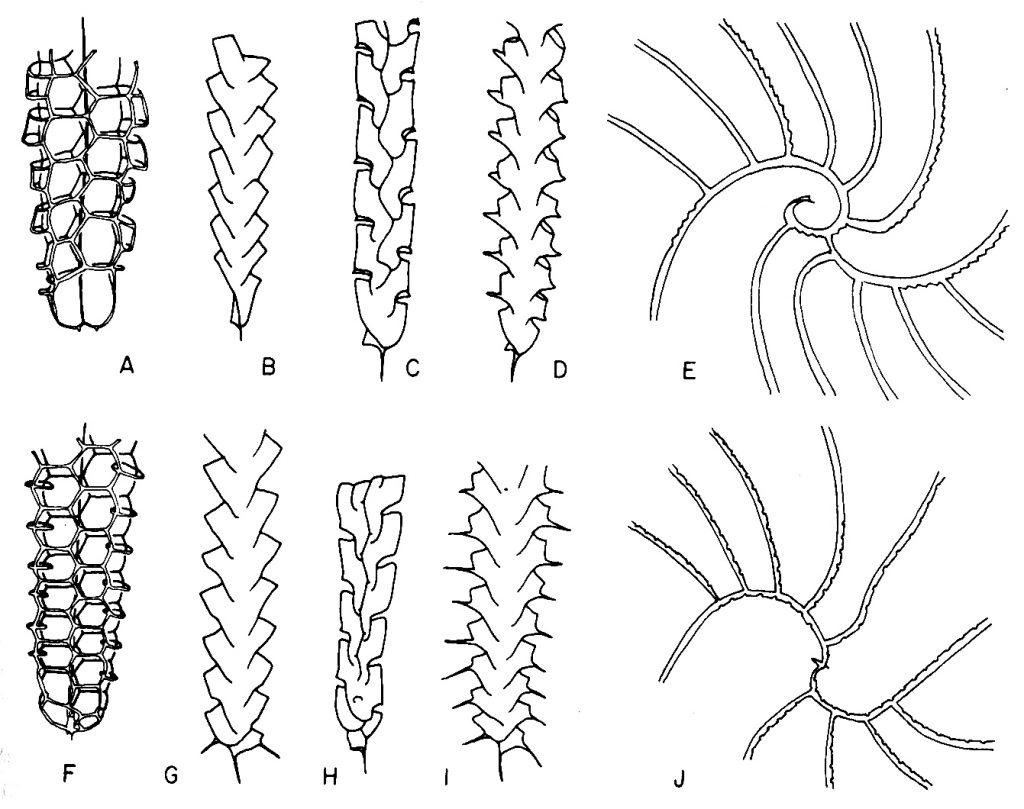
Each row shows species from separate time periods. The morphological convergence between the victims of the late Ordovician mass extinction (bottom) and the distantly related survivors (above) is startling. From Mitchell (1991).
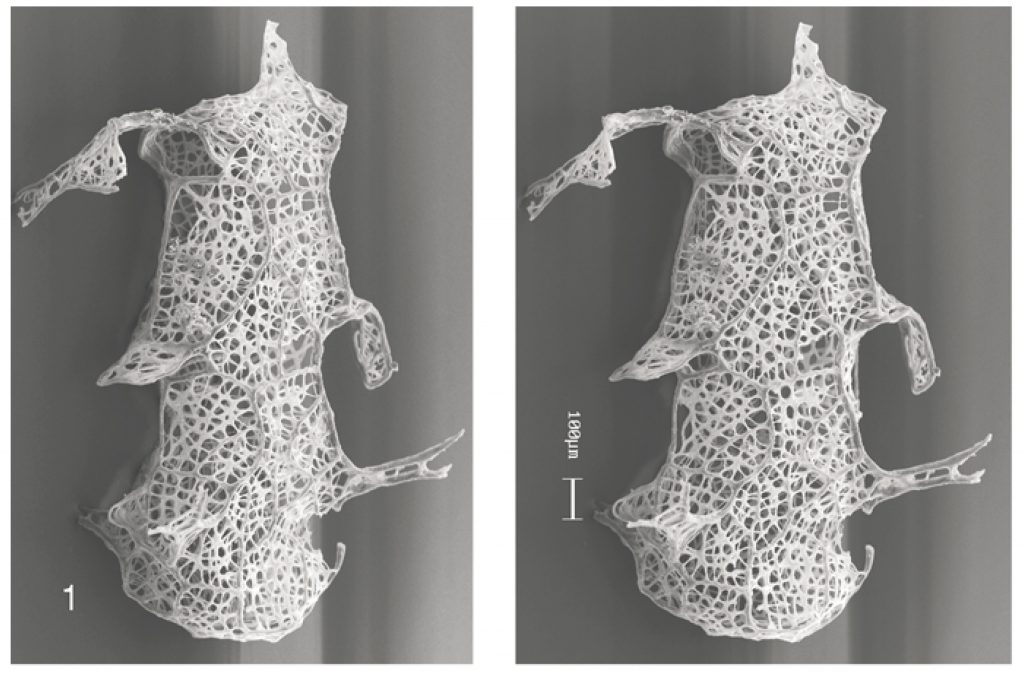
Stereogram pairs of Neogothograptus alatiformis, a retiolitid graptoloid that shows determinant growth and a very elaborate ancora sleeve. From Lenz and Kozlowska 2004.
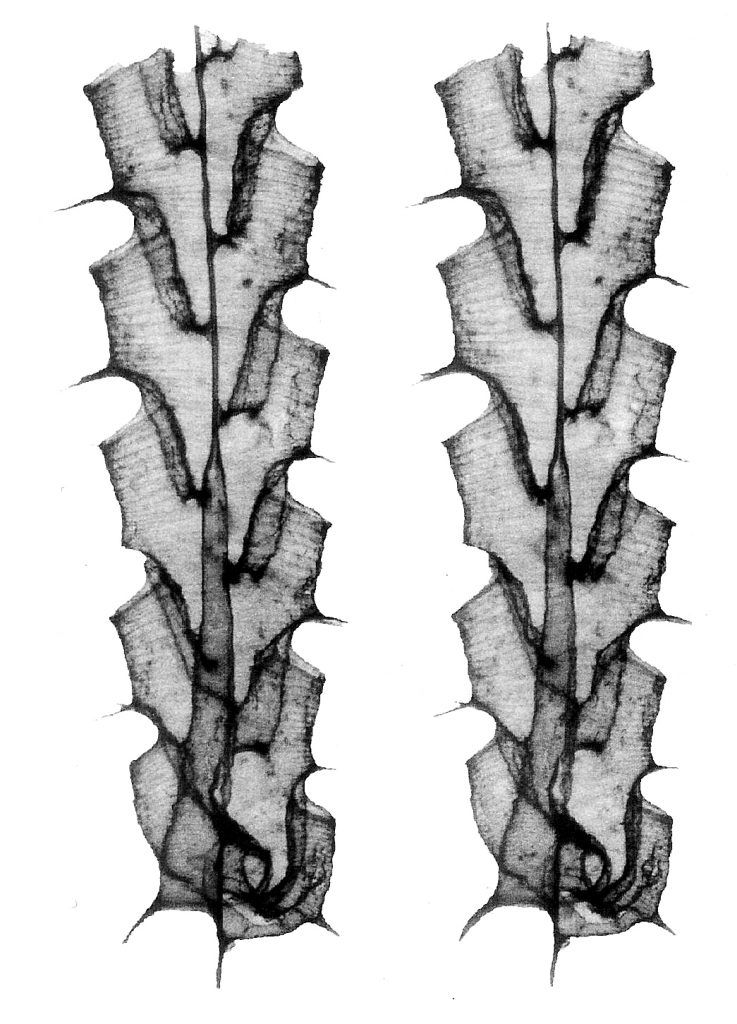
Stereogram of a three-dimensional specimen of Paraothrograptus kimi, an Ordovician biserial graptoloid (credit: Michael Melchin).
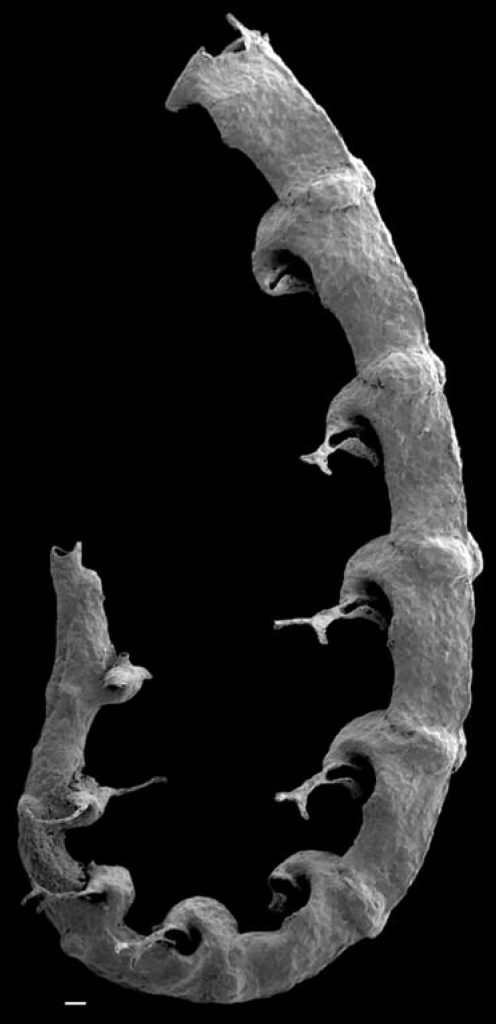
SEM of the Silurian monograptid Pseudostreptograptus williamsi, showing the restricted apertures characteristic of many monograptid colonies (from Loydell and Maletz 2004).
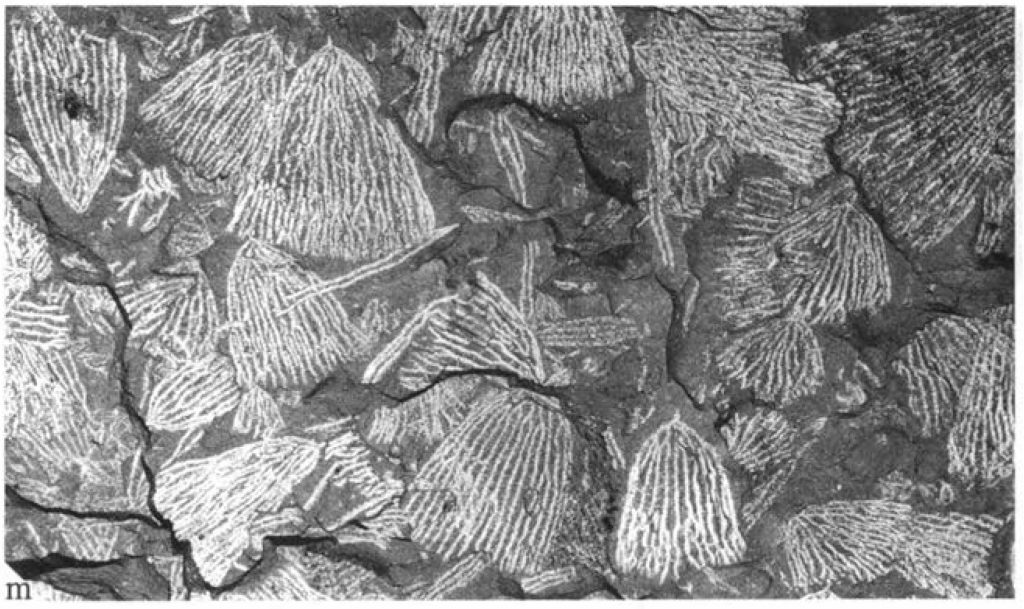
A slab of conical colonies belonging to the early Ordovician graptolite species, Rhabdinopora flabelliformis parabola, from Norway. A potential candidate for the first planktic ancestor of the graptoloids, or at least, a very close relative. Unlike the benthic Dictyonema, while also conical, Rhabdinopora originates from a conical sicula and has no benthic attachment. From Cooper et al. 1998.

